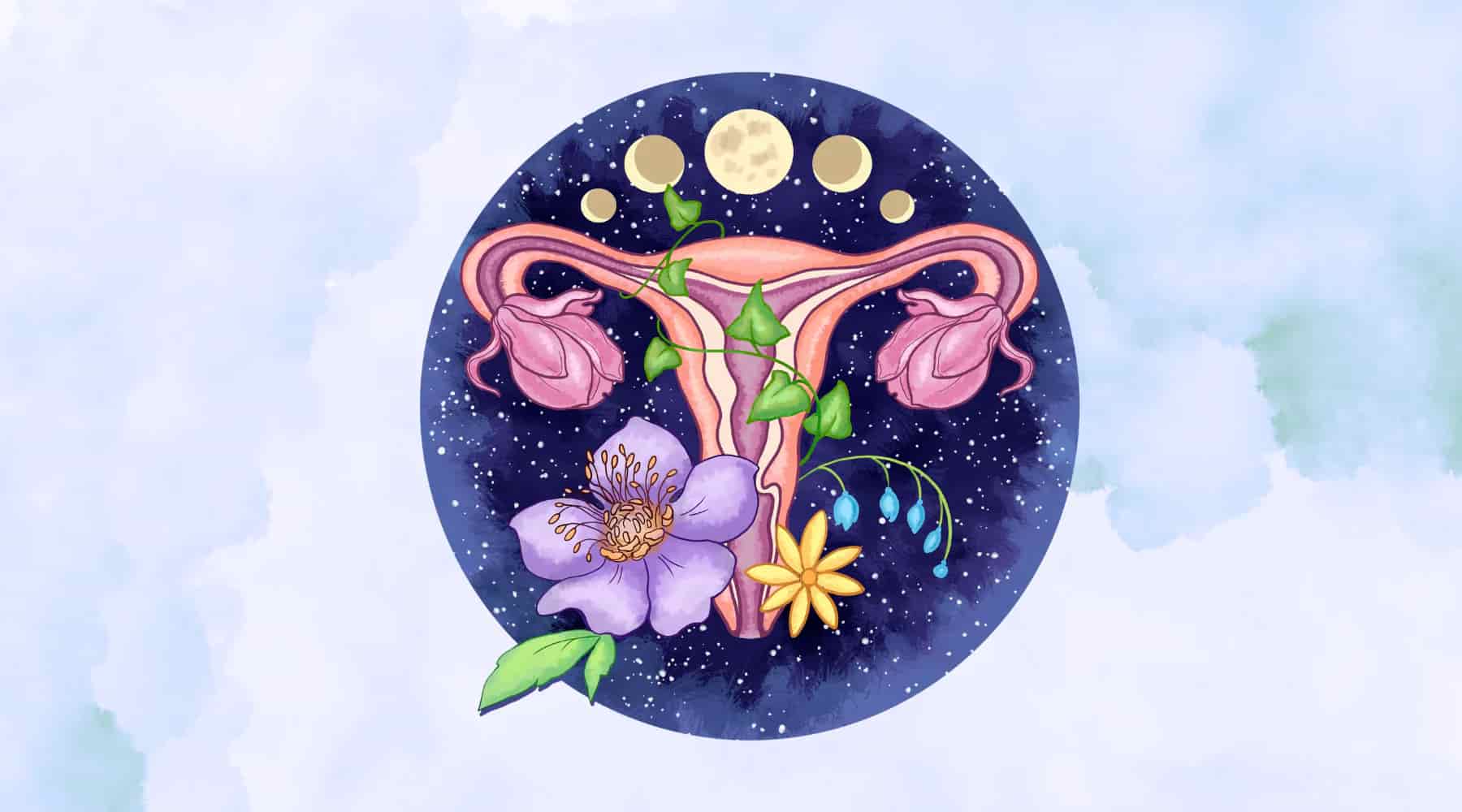Imagine an herb so beloved for its impact on women's health that it's been used for thousands of years.
Vitex, more commonly known as chaste tree (Vitex agnus-castus), is an herb with a storied history in the realm of women's hormone health. Revered for its remarkable hormone-balancing properties, this botanical ally has been in use for thousands of years.
Women from various cultures have turned to vitex to assist with a spectrum of health concerns, ranging from the discomforts of premenstrual syndrome (PMS) to the challenges of menopause. Its longstanding reputation is a testament to the trust it has garnered among those seeking natural remedies for hormonal intricacies.
Beyond its traditional uses, vitex has become an integral component of many modern integrative health approaches that focus on female reproductive well-being. As research has advanced, scientific studies have increasingly supported the herb's ability to address hormonal fluctuations, bringing it into the mainstream of holistic wellness practices.
Whether aiming to stabilize menstrual cycles or alleviate menopausal symptoms, vitex's multifaceted benefits make it an essential consideration for women striving for better health and balance.
Botanical Background: What Exactly is Vitex?
Vitex is a stunning, flowering shrub that thrives in the sun-soaked Mediterranean and Central Asia. Part of the mint family (Lamiaceae), it boasts tall, slender branches adorned with clusters of delicate purple blooms. But the real magic lies in its berries—those small fruits are loaded with potent compounds.
So, what makes these tiny berries so powerful? It's all about their ability to support the body's natural hormone balance. This is where vitex has been making waves for centuries.
A Historical Helper: Vitex Through the Ages
Vitex isn't a newcomer to the the herbal medicine scene. It's been a mainstay in traditional medicine for over 2,500 years. Greek physicians like Hippocrates and Dioscorides praised its powers to "cool" the reproductive organs and support female health. During medieval times, monks used vitex (nicknamed "monk's pepper") to enhance female fertility, and promote chastity—hence the name chaste tree.
But don't worry, this herb's benefits go way beyond monkish habits. Vitex has long been a woman's ally, helping regulate menstrual cycles, support fertility, and ease the transition into menopause. Sure, its folklore may have started with chastity, but modern herbalists know it as a master of hormone harmony.
The Science-Backed Health Benefits of Vitex
Now that we've covered the long-standing love affair with vitex, let's dive into what modern science has to say. Spoiler: this berry is a hormonal superstar.
Hormone Balance & Menstrual Cycle Regulation
For many women, the monthly menstrual cycle can feel like an unpredictable roller coaster. Mood swings, bloating, and irritability make this natural process less than pleasant. Meet Vitex: your hormone harmony hero. It works by interacting with the pituitary gland, a key player in hormone regulation.
By promoting a balance between progesterone and estrogen, vitex helps to smooth out menstrual cycles, leading to more regular periods. Plus, it can help regulate prolactin, a hormone linked to symptoms like breast tenderness and irregular periods. One study in the Journal of Women's Health showed that women who took vitex saw a significant reduction in PMS symptoms, all thanks to its ability to restore hormonal balance each menstrual period. This makes vitex a solid option for anyone looking to naturally harmonize their cycle.
Relief from Premenstrual Discomforts
For those dealing with the intense ups and downs of PMS—vitex can offer a much-needed lifeline. This herb boosts dopamine levels, our body's natural mood-lifter. That dopamine boost can help ease mood swings, irritability and anxiousness tied to PMS symptoms. Plus, vitex can alleviate breast tenderness by balancing hormone levels.
Many women report that after adding vitex to their routine, they feel more emotionally steady, with improved moods and fewer hormonal storms. For anyone feeling at the mercy of their hormones, taking vitex also offers a natural route to smoother, more balanced days.
Supporting Fertility
Vitex has a rich history as a fertility ally. Its fertility-boosting magic comes from its role in supporting the luteal phase, the second half of the menstrual cycle that's crucial for conception. Vitex promotes healthy estrogen and progesterone between levels, which are essential for the successful implantation of a fertilized egg.
Research suggests that vitex supplements may help support fertility by addressing luteal phase defects, which can result in shorter cycles and insufficient progesterone. By gently encouraging a healthier luteal phase and hormone production, vitex may also increases the chances of conception. For those on a fertility journey, vitex offers a natural, nurturing way to support your body's rhythm and support pregnancy.
Eases the Transition into Menopause and Menopausal Symptoms
As menopause approaches, the flood of physical symptoms that can feel like a tidal wave—hot flashes, mood swings, and night sweats are just the beginning. Luckily, vitex steps in to calm the hormonal turbulence. By smoothing out hormonal fluctuations, it can help ease common menopause symptoms, including night sweats and mood changes.
With its ability to promote hormonal stability, vitex can make the transition into menopause feel more like a gentle breeze than a storm. Embracing the vitex benefits during this time can help keep you feeling centered, empowered, and in control.
The Secret Sauce: Active Compounds in Vitex Extract
What's behind vitex's power? The magic lies in its berries, particularly the compounds agnuside and flavonoids.
These bioactive ingredients are the stars of the show, offering a wide range of benefits. Agnuside, an iridoid glycoside, plays a major role in supporting hormone balance by interacting with the pituitary gland, helping to regulate the production of progesterone and estrogen. Flavonoids, known for their free radical scavenging properties, provide vital protection against oxidative stress, which can negatively impact cell health.
Together, these compounds optimize hormone production, helping to ease symptoms like breast tenderness, mood swings, and irregular periods while enhancing reproductive health. Understanding how these compounds work deepens our appreciation for vitex as a go-to herbal remedy and ally for hormone health.
Synergistic Combinations: Power-Pairing Vitex
Vitex plays well with others! You can amplify its effects by pairing it with complementary herbs. Here are a few examples:
- Black cohosh: This duo is a match made in menopause heaven, offering extra relief from menopausal symptoms.
- Dong quai: Perfect for supporting blood flow and nurturing reproductive health.
These herbal treatment combinations allow you to tailor your regimen to your unique health needs, giving you more ways to harness the full potential of vitex.
Vitex in Comparison to Other Herbal Remedies
Vitex often gets compared to other herbal remedies that target similar concerns, like premenstrual syndrome (PMS) and menopausal symptoms. Let's see how vitex stacks up against the competition:
- Maca: This adaptogen helps with energy and libido, but vitex is more targeted for hormone balance and regulating menstrual cycles.
- Evening Primrose Oil: Known for relieving PMS-related breast tenderness, evening primrose oil can complement vitex, but doesn't have the hormone-balancing depth that vitex offers.
Safety & Precautions: A Quick Word of Caution
Vitex is generally well-tolerated, but like any potent herb, it's important to be aware of potential side effects. While most people handle it fine, some might experience mild headaches, digestive issues, or skin irritation. It's always smart to start with a lower dose and see how your body reacts.
If you're on hormonal or birth control pills or hormone replacement therapy, check with your healthcare provider before using vitex, as it may interfere with these medications. If you are pregnant or breastfeeding, vitex isn't recommended unless under the supervision of a healthcare professional.
How to Use Vitex: Your Practical Guide
Vitex is super versatile and comes in several forms to suit your needs—tinctures, capsules, and even teas.
Liquid tinctures, like those from WishGarden, are especially quick-acting, allowing your body to absorb the active compounds faster than capsules or dried herbs.
For best results, take vitex in the morning, when it can have the greatest effect on your pituitary gland, which controls hormone production.
At Wishgarden, we utilize vitex's balancing powers in many of our women's formulas, proving just how versatile it really is!
Find vitex in the following tinctures: ReBalance, Cycle Changes, Cycle Harmony, Cycle Vitality 1, Cycle Vitality 2, Fertility Prep, Hot Flash Tamer, and PMS Emotional.
[[ recipeID=recipe-2m294zlmk, title=DIY Vitex Tea Recipe: A Balancing Brew for Hormonal Health ]]
FAQs for Vitex (Chasteberry)
1. What does taking vitex do to hormones?
Vitex helps to balance hormones, particularly by supporting the pituitary gland, which manages the release of several key hormones. It specifically promotes a healthier balance of both progesterone levels and estrogen, two hormones essential for a regular menstrual cycle. Vitex can also balance prolactin levels, which may help with breast tenderness and irregular periods, smoothing out the hormonal ups and downs that lead to PMS and menopause symptoms.
2. What are the signs that vitex is working?
Vitex works gradually, so you'll notice improvements after a couple of months. Signs that it's kicking in include:
- More regular menstrual cycles (if they were irregular before)
- Reduced PMS symptoms, like less bloating, mood swings, or breast tenderness
- Improved fertility if you're using it for luteal phase support
- A smoother transition through menopause, with fewer hot flashes and mood swings
- More balanced mood and reduced anxiousness around your cycle
- Less breast tenderness
3. How does chasteberry make you feel?
Chasteberry (vitex) tends to bring a sense of calm and balance, especially when it comes to mood swings related to hormones. Many people report feeling more emotionally grounded, with fewer irritability spikes during PMS or menopause. Thanks to vitex's effects on dopamine, some also notice improved mental clarity and an overall boost in mood.
4. Does chasteberry affect sleep?
Vitex doesn't directly influence sleep for most people, but studies suggest that by regulating stress and hormonal imbalances, it can indirectly help improve sleep quality. Some individuals find that by reducing PMS-related stress and restlessness, vitex supplementation allows for more restful nights, though it's not considered a sleep aid.
5. Does vitex cause weight gain?
Vitex isn't known to cause weight gain. In fact, by balancing hormones, it might actually help prevent hormonal weight fluctuations, especially those tied to PMS or menopause. If weight changes do occur, they're likely due to other lifestyle or hormonal factors rather than vitex itself.
Discover the Hormonal Harmony of Vitex
Vitex is a powerhouse when it comes to supporting hormone balance and reproductive health. Its unique ability to interact with the pituitary gland allows it to regulate key hormones like progesterone and estrogen, making it a helpful ally for women experiencing everything from PMS to menopause.
Whether you use it on its own or pair it with other herbs, vitex offers a customizable, natural approach to hormonal well-being. As with any herbal supplement though, it's important to be informed and to monitor how your body responds, especially if you're using other treatments. With patience and consistency, vitex can help you achieve hormonal harmony and enhance your overall wellness journey.
Rebecca Younger is passionate about herbs and women's health. She aspires to plant seeds of inspiration within her community about plant medicine and healthier ways of life. She studied Herbal Medicine at Herbalism Roots in Denver and is a certified Doula through the Matrona Foundation. She is the Brand Communications Specialist at WishGarden Herbs.
For educational purposes only. This information has not been evaluated by the Food and Drug Administration. This information is not intended to diagnose, treat, cure, or prevent any disease, or to sell any product.
Recommended Products
Further Reading















